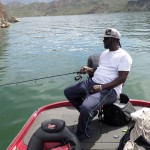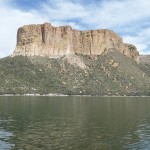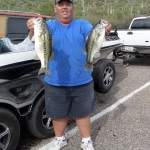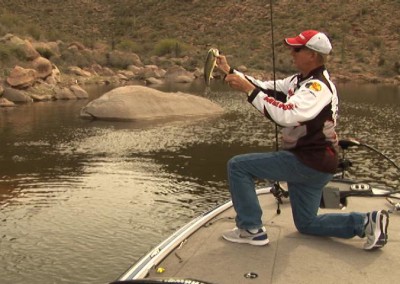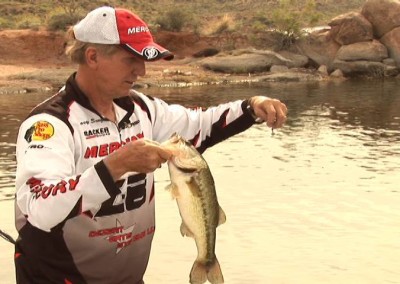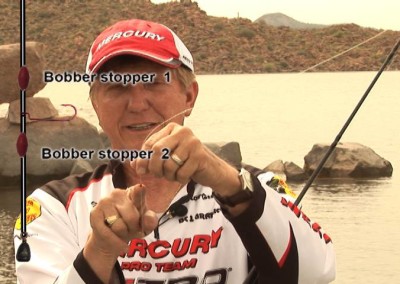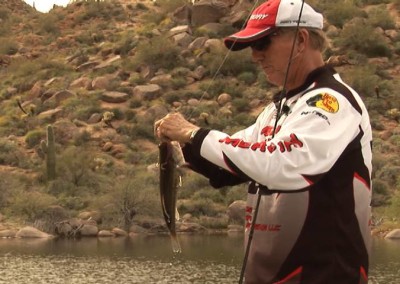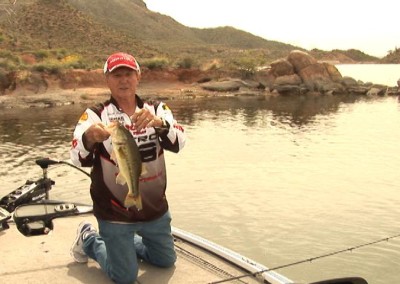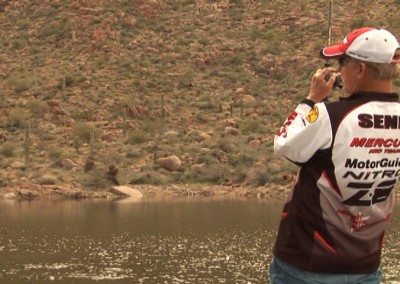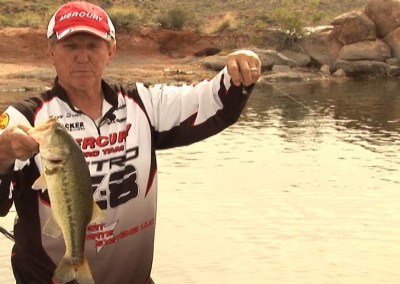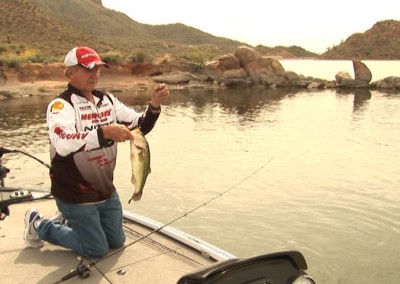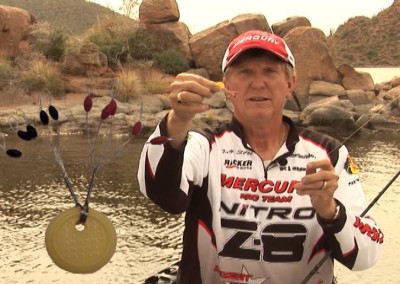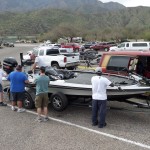

ARIZONA BASS FISHING LAKES
ARIZONA BASS FISHING LAKES:
The state offers fantastic angling waters, each with their own particular unique bid. Roosevelt is the biggest. It is the head lake in a chain of 4 lakes and gathers new water from the Salt Stream and Tonto River. This flood of crisp water advances high generate rates and gives supplements to a solid natural way of life. Roosevelt Lake sports both largemouth and smallmouth populaces, with a lot of each. Depending upon the season and time of the very first moment, someone can catch large mouth’s starting from the surface to 40 or 50 feet profound.
Apache Lake, the second lake in the chain, offers some fine smallmouth fishing and really fair largemouth angling. It is an overwhelmed waterway channel with amazing surroundings which incorporate untamed life asylums. You can get smallmouth and largemouth on consecutive throws, and the lake is known for top water activity amid the warm months of the year.
Apache Lake offers a portion of the best smallmouth bass fishing in the state. At the Apache Lake Marina there are advantageous cabin and outdoors alternatives, an eatery, bar and store.
Canyon Lake, third in the chain, is another overwhelmed waterway channel and offers basically largemouth angling. This lake is known for littler amounts of bass yet commonly higher quality. Numerous substantial fish are gotten on Canyon Lake every year.
The fourth lake in the chain is Saguaro. It again offers essentially largemouth bass angling. As the last lake in the chain it underpins a much littler populace which is frustrated further by the way that the lake level is deliberately changed more than 10 feet in a 24 hour period for creation of power.
Bartlett Lake is on the Verde Stream upper east of Phoenix. It offers largemouth bass angling which might shift from year to year contingent upon emotional water level changes.
Lake Pleasant, northwest of Phoenix is a speedy drive from town and offers amazing largemouth angling. It bolsters a decent populace of bass and offers some lunker fishing on occasion.
San Carlos Lake in eastern Arizona is a safe house for enormous bass when the water level stays advantageous for quite a long while in succession. On occasion this lake can convey a breaking point of bass in the six to seven pound range.
Alamo Lake on the Bill Williams Waterway in western Arizona is another lake which offers stringers of huge bass when the water levels participate for a couple of years in succession.
Along the Colorado Waterway Lake Powell, Lake Mead, Lake Mohave, Lake Havasu and Martinez Lake all offer fine largemouth bass fishing. These are huge waters which bolster both amount and nature of bass. These normally clear water supplies test the fishermen abilities and offer numerous approaches to catch bass.
BASS FISHING IN ARIZONA
BASS FISHING IN ARIZONA
Bass are a standout amongst the most looked for after of all the amusement fish. Its allure traverses societies, age gatherings and sexual orientations to tap on the heart series of fishermen all over. Go along with us in our attempt to offer data about bass angling on your most loved bass lake in Arizona.
Understanding the essential occasional developments of smallmouth bass and largemouth bass is vital to finding them on nearby lakes in the Fabulous Canyon State.
ARIZONA BASS FISHING LAKES:
The state offers fantastic angling waters, each with their own particular unique bid. Roosevelt is the biggest. It is the head lake in a chain of 4 lakes and gathers new water from the Salt Stream and Tonto River. This flood of crisp water advances high generate rates and gives supplements to a solid natural way of life. Roosevelt Lake sports both largemouth and smallmouth populaces, with a lot of each. Depending upon the season and time of the very first moment, someone can catch large mouth’s starting from the surface to 40 or 50 feet profound.
Apache Lake, the second lake in the chain, offers some fine smallmouth fishing and really fair largemouth angling. It is an overwhelmed waterway channel with amazing surroundings which incorporate untamed life asylums. You can get smallmouth and largemouth on consecutive throws, and the lake is known for top water activity amid the warm months of the year.
Apache Lake offers a portion of the best smallmouth bass fishing in the state. At the Apache Lake Marina there are advantageous cabin and outdoors alternatives, an eatery, bar and store.
Canyon Lake, third in the chain, is another overwhelmed waterway channel and offers basically largemouth angling. This lake is known for littler amounts of bass yet commonly higher quality. Numerous substantial fish are gotten on Canyon Lake every year.
The fourth lake in the chain is Saguaro. It again offers essentially largemouth bass angling. As the last lake in the chain it underpins a much littler populace which is frustrated further by the way that the lake level is deliberately changed more than 10 feet in a 24 hour period for creation of power.
Bartlett Lake is on the Verde Stream upper east of Phoenix. It offers largemouth bass angling which might shift from year to year contingent upon emotional water level changes.
Lake Pleasant, northwest of Phoenix is a speedy drive from town and offers amazing largemouth angling. It bolsters a decent populace of bass and offers some lunker fishing on occasion.
San Carlos Lake in eastern Arizona is a safe house for enormous bass when the water level stays advantageous for quite a long while in succession. On occasion this lake can convey a breaking point of bass in the six to seven pound range.
Alamo Lake on the Bill Williams Waterway in western Arizona is another lake which offers stringers of huge bass when the water levels participate for a couple of years in succession.
Along the Colorado Waterway Lake Powell, Lake Mead, Lake Mohave, Lake Havasu and Martinez Lake all offer fine largemouth bass fishing. These are huge waters which bolster both amount and nature of bass. These normally clear water supplies test the fishermen abilities and offer numerous approaches to catch bass.
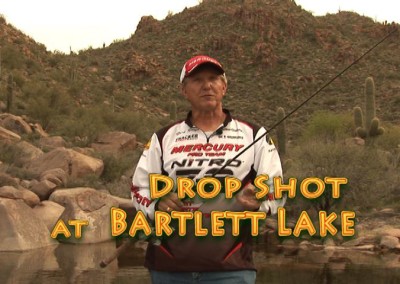
Gary Senft Bass Fishing at Bartlett Lake
How to Fish for Bass – How to Catch Bass
How to Fish for Bass – How to Catch Bass
How to fish for bass and how to catch bass sure do sound like the same thing, but if you have ever tried the first part, you know the second part is different. There is a reason why one person comes in empty handed and the next one comes in with 3 or 4 trophy size, 10 pound or more bass in the live well.
If all bass anglers were created equal there would not be over 1,000 bass fishing tournaments happening every weekend national wide from mid summer to late spring. You will never see 1,000 salmon tournaments or even cat fish tournaments taking place at a time and especially every weekend.
Yes sire, there is certainly a difference between the person that will fish for bass and the one that will catch bass.
There are two problems and they are a couple of big ones. The “how” part of the equation is more than water plus fishing pole equals bass. First you need to know your bass (and location) and second you need to know where the bass are located.
If you are watching ESPN one Saturday morning and you see some Pro angler catch bass after bass along the shoreline it would only make sense to fish the shore. You can fish for bass every day along the shore and come up disappointed for about 7 months, but if your really stick to it, you will hit around 5 months of really good fishing.
The reason why is because the bass only collect in this area from mid to late summer up to early spring, and that is only in certain parts of the country. It is much less in the colder climates.
Throwing the correct bait in the lake is technically a way to fish for bass, but it is the old “does a falling tree make a sound” story. “If you fish for bass where there are no bass, will you catch bass even if you are not looking?”
So there you go, the first component of how to fish for bass is to know your bass.
This brings us to the second component; if they are not along the shore, they must be enjoying some other water condition. Where could this location be on this lake or waterway? For the most part, bass are bass nationwide, it is genetics. They spawn about the same time and they like deeper water about the same time.
The lakes are all different though. Lake Terrell in Washington State is a great place to fish for bass. When the bass want to go deep there is an “X” shaped trench in the lake almost like something from a pirate map. It is confined and the maximum depth is 14 feet when the lake is full.
One of the best places to fish for bass in all of America (in my opinion) is Bartlett Lake in Phoenix, Arizona. In contrast to Lake Terrell, Bartlett Lake is about 3,000 acres (surface area) and has depths that are well over 180 feet. This is not to say you should fish for bass at 180 feet, but the fish do have that option if they want a bit of privacy.
And there you have the second component, know your lake or waterway.
Know your bass and know your location, now you are ready to fish for bass and be effective at the same time.
The “How to catch bass” part of the story is simple because bass will normally hit with such force they almost set the hook themselves. The thing is they will not hit any bait if they don’t see it.
So there you have it, now you know how to fish for bass and how to catch bass that bite your bait. Technically this is a great strategy for any type of fishing.
Fishing Lures for Bass
Fishing Lures for Bass
When it comes to finding or selecting fishing lures for bass you have thousands of choices, but there really are only two that work. Not two lures for bass, two concepts of lures for bass. You either go “la natural” or you get “crazy”, there is very little room for “naturally crazy” when it comes to fishing lures (or baits) for bass.
Bass are either in a bad mood or they want a quick snack or two; often times they are in both a bad mood and want a snack. This just increases your chance of picking the right lure or bait. People that are very experienced with fishing for bass know this, they probably have not looked at it this way before, but I have an odd gift for seeing things in an odd way.
I have personally witnessed a bass eat a wild duckling about the size of a tennis ball and had either a bass or the most aggressive perch in the western hemisphere bite the fingers on my right hand as I was trailing them in the water off the boat.
Ducks and fingers are not common fishing lures for bass, but they obviously work.
The key to selecting the right fishing lures for bass specifically relies more on your delivery and presentation than the actual lure itself. Your mission is to figure out where the bass are located and then get your bass fishing lure of choice to them because they will rarely travel farther than the range of sight or sound to eat something. Just because they are always ready for a fight does not mean they go looking for one.
You go to them, they don’t come to you.
You often hear the term “Water Column” used when people are talking about fishing for bass or lures for bass. This term is very simple when you understand what it means, and it means exactly what it says. If you take a lake or waterway and look at it by “depth” that is a column. Fish at the surface are at the top of the column and fish at the lake-bed are at the bottom of the column.
Bass, more than other apex predator species will move along this water column during different times of the year. In one part of the year they prefer the upper levels while other parts of the year they may like the depth of 12 or 18 feet. Other times they may like it at 40 feet deep. Depending on the climate, they may like less than 5 feet in the morning and 25 feet at noon. You just need to know your fish.
This is where your choice of fishing lures for bass come into play or to use bass fishing techniques with lure that are not specifically designed for bass. The lures you want to use are the ones that will get to where the fish are, either through their engineering or through the way you rig them.
A plastic worm is one of the classic bass fishing lures because within a few minutes you can modify it from something you are using in 12 inches of water to something that in dancing down bass alley at 30 feet deep.
The correct bass fishing lures or baits are not so much the lures themselves, you just need to understand the “water column”, the character of the fish that time of year in relation to the water column and how to rig the gear that you are using to get to that depth.

